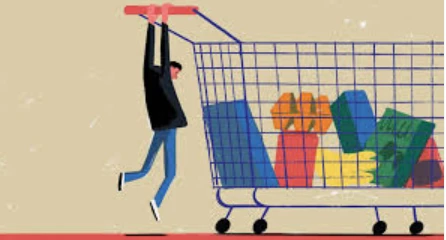
Partner Article
Rethinking retail in a transformative era
Beauty salons and tattoo parlours have prospered on High Streets while the number of banks and department stores has fallen, analysis of Ordnance Survey data by the BBC reveals.
It goes without saying that the UK High Street has undergone a significant transformation. The number of clothes shops operating in Britain is down by 10 per cent. The collapse of the Arcadia retail empire in 2020 saw Burtons, Dorothy Perkins, Wallis, Topshop and Miss Selfridge all disappear and more recently M&Co went into administration causing an even bigger hole. More than 800 High Street banks and building societies have recently closed their doors along with the loss of more than 6,000 cash machines.
By contrast the data shows that tattoo parlours and piercing studios have proved particularly popular achieving a growth rate of over eight per cent. Many smaller towns and villages have acquired one for the first time, whilst large towns and cities are seeing multiple providers; but as one tattoo parlour owner said: ‘‘you can’t get a tattoo on the internet’.
Nor can you get a haircut. High Streets and shopping centres have become a magnet for hair and beauty services in the past few years – the research found an additional 5,100 premises now operate compared with pre-pandemic - an increase of 5.9 per cent. In Glasgow, hair and beauty services are now the most prevalent type of shop - overtaking pubs and bars which were the most dominant sector in March 2020.
Despite Covid and the rise in energy and food prices, the number of eating and drinking establishments have also increased, so too have the number of organic, community or speciality food shops particularly farm shops selling from field to fork at a premium.
Given the data, it is irrefutable that High Streets and shopping areas are evolving into more service and hospitality-based venues where experience is the name of the game. But this does not spell the end for retail. This is proven by the fact that pureplay digital organisations are increasingly creating physical representations of their brands because they understand that providing something tangible drives brand awareness, expands product offerings, improves the customer experience, reaches new customer segments and enables valuable data and insight collection.
Clearly, there is still very much a role for physical stores. And this is underlined too by the growing appetite for multi-brand retail strategy. For instance, Fraser’s leveraging its expertise in sports retail to bolster growth elsewhere across its portfolio. By acquiring Sports Direct, Frasers Group was able to integrate the brand into its existing operations and take advantage of its strong market position, reputation, and customer base. This is allowing the company to further solidify its presence in the UK retail market and position itself for future success. A multi-brand retail strategy can provide a company with greater stability, cross-selling opportunities, increased market share, better use of resources, and opportunities for growth demonstrating the power of strength in numbers.
Learning from digital and multi-brand strategy the key for more traditional retailers is creating a balanced customer experience across the digital and physical landscape. The two dimensions should support each other. We’ve seen countless examples of physical retailers (both luxury and High Street) focusing entirely on creating a fully immersive (and costly) instore experience with the purpose of driving footfall, but to the detriment of everything else, including the digital experience and the basics such as conversion. The key here is understanding that an online presence does not need to cannibalise an offline presence.
In fact, the opposite is true. If you provide a poor online experience to someone wanting to buy, rather than head to your physical store, they are more likely to ditch you completely and find another provider who can fulfil their need at that specific time – irrespective if this is more expensive. Convenience and cost make for uneasy bedfellows, with one always outdoing the other depending on real-time context. What this shows is that a frictionless online experience is no longer just a must for pureplay stores, its critical for bricks and mortar too. In today’s market retailers have to create synchrony - the question therefore, is how hybrid are you?
Tim Axon, founder LeanConvert
This was posted in Bdaily's Members' News section by Lean Convert .
Enjoy the read? Get Bdaily delivered.
Sign up to receive our popular morning London email for free.








 Powering a new wave of regional screen indies
Powering a new wave of regional screen indies
 A new year and a new outlook for property scene
A new year and a new outlook for property scene
 Zero per cent - but maximum brand exposure
Zero per cent - but maximum brand exposure
 We don’t talk about money stress enough
We don’t talk about money stress enough
 A year of resilience, growth and collaboration
A year of resilience, growth and collaboration
 Apprenticeships: Lower standards risk safety
Apprenticeships: Lower standards risk safety
 Keeping it reel: Creating video in an authenticity era
Keeping it reel: Creating video in an authenticity era
 Budget: Creating a more vibrant market economy
Budget: Creating a more vibrant market economy
 Celebrating excellence and community support
Celebrating excellence and community support
 The value of nurturing homegrown innovation
The value of nurturing homegrown innovation
 A dynamic, fair and innovative economy
A dynamic, fair and innovative economy
 Navigating the property investment market
Navigating the property investment market